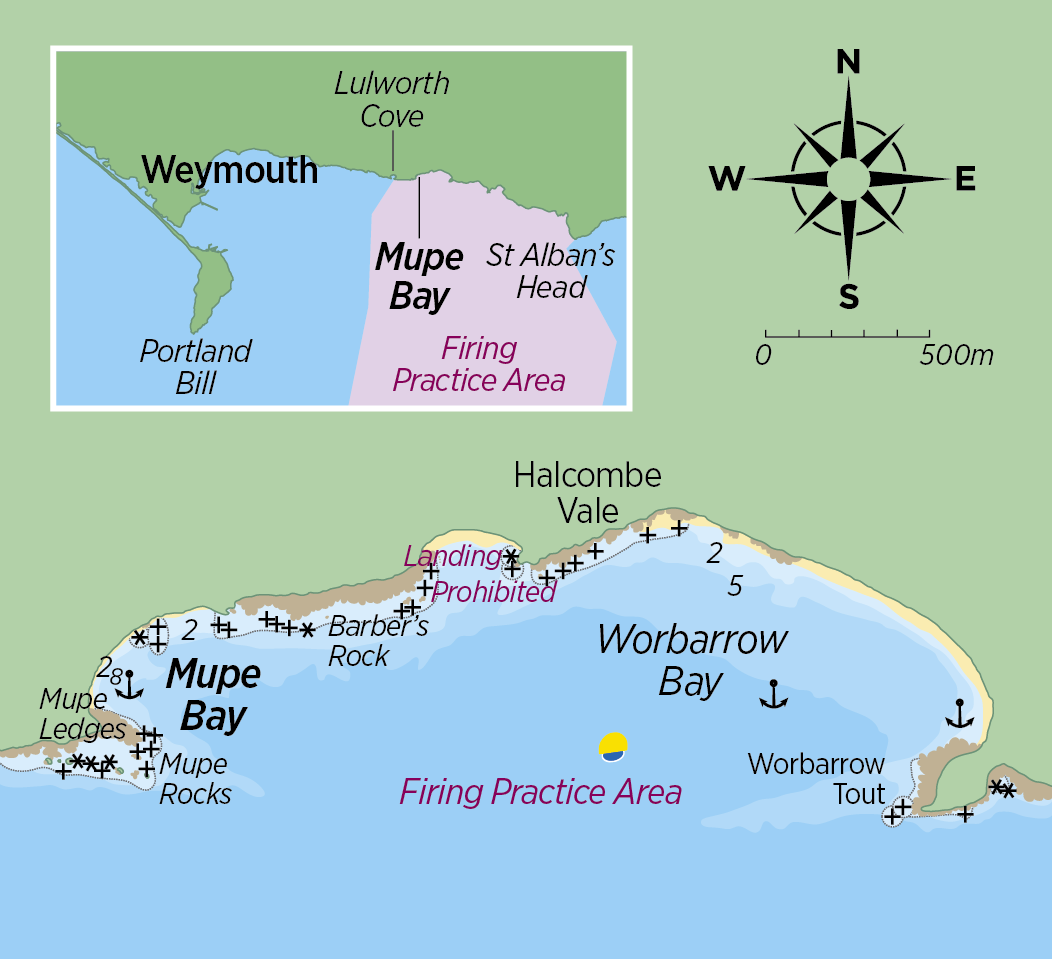Whilst cruising the Dorset coast Tom Cunliffe was intrigued by the sight of boats anchored behind some rocks so decided to investigate. He wasn’t disappointed by what he found in Mupe Bay
Costa del Dorset for me!’ sang Adge Cutler and The Wurzels in their classic Somerset pub song. If you are baffled by this reference, it may help to learn that in an album from this rustic band the number falls between The Shepton Mallet Matador and When the Common Market comes to Stanton Drew. Many’s been the mid-summer morning my family and I have put out from Weymouth into a golden dawn to catch an 0700 east-going stream off St Albans Head, excited that the ‘Costa’, one of the finest stretches of coastline in the British Isles, is laid out waiting for us.
Boats leaving Weymouth well before breakfast reap an unexpected benefit in the form of the Lulworth firing range guard boats, or rather the lack of them. While nobody with an interest in the nation’s security can really object to our lads getting in a bit of practice with the artillery, being obliged to alter course and give the dramatic procession of beauty spots promised by this remarkable passage four or five miles clearance is a shame. The early bird, however, beats the soldiers and can creep along the shore just outside the 10-metre line, enjoying a close-up of the cliffs.
Once or twice on these trips, we noticed boats anchored behind a pile of rocks at the west end of Worbarrow Bay, halfway between Weymouth and St Alban’s Head. The rocks seemed to confer more shelter than the chart suggested and finally our curiosity got the better of us. We stopped there for breakfast and were not disappointed. The view of the impossibly overhanging Gad Cliff rising east of us was worth the effort in itself.
Mupe Bay is unmarked and largely untroubled by Man and his intrusions. Entry from the east is easy, so long as you give the drying shoal, inside the mini-stacks that shelter it, a sensible berth. From the west, clear the outer stack by a cable or so, then steer north, When the little point at the root of the rocky ledge bears around 250°T, swing to port and sound in. Holding is reasonable and don’t be dismayed if you arrive to find a number of boats inside. There’s more room than you think.
This is very much an open anchorage, so don’t expect flat water. In settled or light northerly weather you may find calm, but more often than not some sort of surge will be running in. This makes overnight stops less attractive than they might otherwise be but, if you are lucky, moonlight on the chalk-white cliffs that tower over the mast is one of the great sights of the Channel. Unless you’ve been before, however, don’t even think of a night entry.
Dinghy landing is not difficult, but the walks are recommended only to those whose hearts have passed a recent MOT test. The cardiac climb up to the coastal paths might deter an Alpine guide, but the rewards are colossal.






